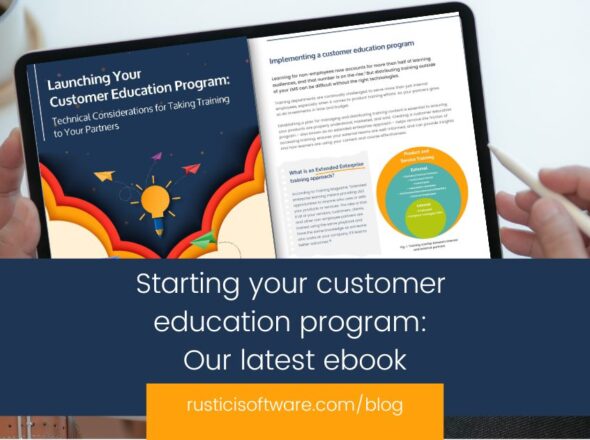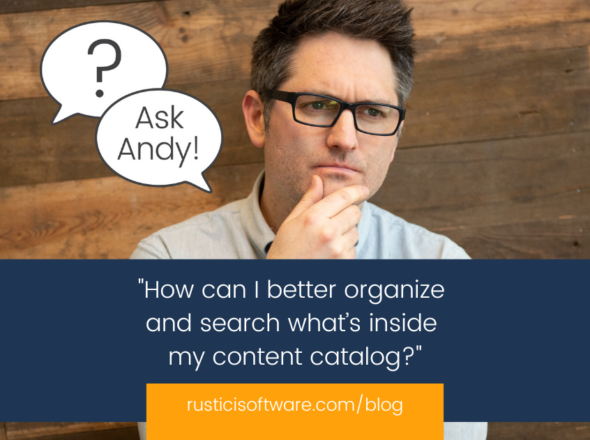The courage to change. In some industries and professions, that’s a lot more challenging than others. At Rustici Software, we work with learning standards, so we know a lot of people still use SCORM simply because it works, gets the job done and is widely adopted. The accounting and CPA profession isn’t too different. With all the rules and regulations they have to follow and the precision of their work, changing how they do things could either have great results or serious consequences.
The AICPA (Association of International Certified Professional Accountants) & CIMA wanted to modernize their ecosystem, but they faced a few challenges. How do they get executive and member buy-in? What tools will help? How can they ensure members can quickly and easily find the exact content they’re looking for? And it also wouldn’t hurt if the AICPA & CIMA’s staff could cut down on course creation time. They partnered with Rustici Software, parent company LTG and sister companies GP Strategies and Bridge to overhaul their ecosystem. Here’s what they shared during the ATD International Conference & Expo 2024.
3,500 hours of accounting course tagging and metadata
AICPA & CIMA sell training to accounting professionals, and they have over 3,500 hours of content that their 600,000 members and students can choose from. Over the years, however, their courses haven’t always been tagged correctly or included consistent metadata.
They knew they could never ask anyone to sit through so much content. They also knew that properly and consistently tagging would help members find – and purchase – relevant courses. So they sought out an AI solution. What would have taken a human at least 3,500 hours (and likely much longer to write all the relevant data), took only a short time for AI to “watch” all the videos and “read” all the materials to provide metadata and tags.
They did spend time setting up best practices for the AI to follow and then went back to refine the results. AICPA & CIMA’s metadata best practices included putting in the field of study, the course description, learning objectives, the course metadata itself and keywords for learners to find the best results for their needs. These best practices and skills taxonomy ensure every course is being consistently tagged in the ways that match their needs. Even with this time spent on building best practices, they saved countless hours of work no one would want to do.
“We leveraged AI to clean up the metadata in our learning ecosystem. It would have taken months, and it took minutes.” – Michael Grant, Senior Director of Learning Innovation & Assessment at AICPA & CIMA
Justifying AI to a risk averse audience
The accounting and finance industries tend to be more cautious as the stakes are quite high in their profession. Wanting to make large changes to their ecosystem, AICPA & CIMA wrote a business case to obtain buy-in from internal stakeholders. With the help of a partner, member feedback, a competitive analysis and knowing AI has the attention of most executives globally, they proved the need for, and benefits of, modernization for both the organization and their members.
Writing assessments in a high compliance world
Like most course providers, AICPA & CIMA have exam questions to go along with their content. And since they’re providing compliance training, they also have to write compliance training knowledge checks. The difference between the two is that knowledge checks require rationales for each answer – both correct and incorrect answers – to each question. Meaning, they have to provide why that answer is either wrong or right, not just that a learner answered correctly.
AI can take a defined set of technical content and create knowledge checks and exam questions with ease.. Then, a subject matter expert or Instructional Designer can review and alter the results rather than completely starting from scratch to save time. For one hour of continuing education, three knowledge checks are required. What previously took about 20 minutes to write one question – roughly one hour of work for every course hour – now takes about 10-15 minutes.
“I see AI turning into efficiency gains and allowing me to focus my time on more creative endeavors. And actually spending that time it takes for those creative endeavors that I usually have to rush through to do the mundane tasks.” – Gary Lamach, Director of Learning Consulting at AICPA & CIMA
Putting their content in their members’ hands
AICPA & CIMA licenses content to different CPA firms and state societies. Like many course providers, they used to try and track content usage by their customers. When they modernized their ecosystem, they added Rustici Software’s Content Controller and made it the hub of the department. Now they can provision their products the way they want. Their customers can take training through AICPA & CIMA or on their own LMS, regardless of which standard the LMS uses.
“Now we have the ability to be agile and mobile. Fun. We get to try all sorts of new things.” – Lamach
Making the financial case for AI
The AICPA & CIMA learned that one way to get buy-in for AI tools is to show how they will help save time in a variety of ways. You need to come to the table showing leadership how the company can save money and drive efficiency. While saying how cool AI can be and its uses should also be included, having a metric like efficiency gains is a great way to push AI forward within your company.
The AICPA & CIMA are already using AI tools to save time cleaning up their vast library and creating courses. Is this on your roadmap as well? It’s on ours! Learn more about our upcoming Rustici Generator tool that can help you make the most of your content or the content your customers bring to your platform. As always, if you have questions about AI, our products or anything really, please reach out.


